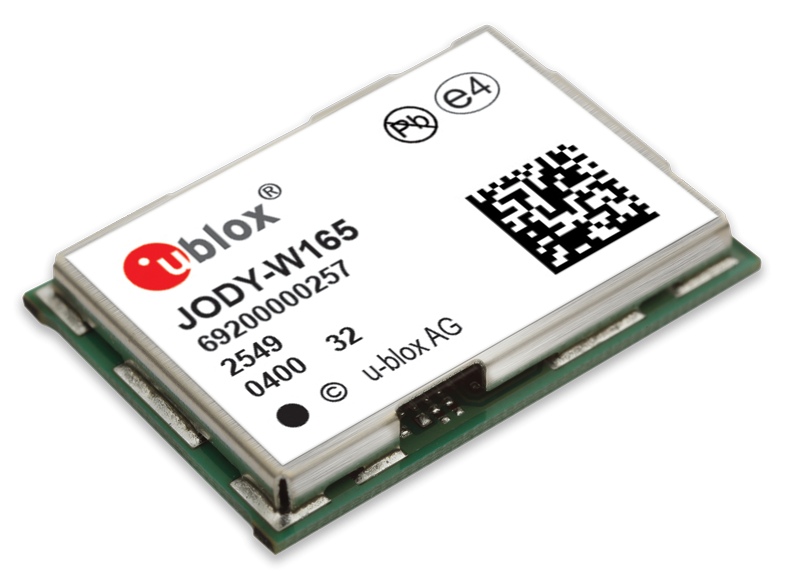
- Support portal
- Evaluation Kits and partner products
u-blox Support
- Product documentation
Documentation
- Investor relations
Investor relations
Innovation
|
31 Jan 2017
RSDB – Connecting cars with better Wi-Fi
Wi-Fi is integral to today’s modern connected car. Powered by LTE, vehicle Wi-Fi hotspots are an option on virtually all the latest car models. Most new cars can also use Wi-Fi to integrate the smartphone with a car infotainment system, for example via Apple CarPlay, or Android Auto.
The increasing use of Wi-Fi in our cars as hotspots and smartphone connections is without a doubt a great convenience, but can also create radio interference issues. Car environments are extremely noisy. In-car Wi-Fi signals have to compete with in-car interference from Bluetooth devices, as well as interference from Wi-Fi hotspots and other miscellaneous ISM band noise in the vicinity. This interference ends up lowering Wi-Fi transmission speeds or even disrupting connections for both Wi-Fi and Bluetooth devices.
While Bluetooth, cordless phones and countless other wireless devices use the noisy 2.4 GHz band present in most car hotspots, the Wi-Fi 802.11ac standard has the ability to operate on the less congested 5 GHz band which is not only less used, but offers more channels for communication.
Most automotive-grade Wi-Fi chipsets today achieve concurrent operation in the 2.4 GHz and 5 GHz band using a technique called “time-division-multiplexing”, resulting in lower data rates per band.
Since many older Wi-Fi devices only work on the 2.4 GHz band, car hotspots are required to stick to this band for compatibility reasons. As the 2.4 GHz is also used by Bluetooth and other Wi-Fi devices leading to congestions, transmission speeds can be less than ideal. Next-generation applications, such as a Wi-Fi Screen via Apple Car Play or a Rear Seat Infotainment System, try to avoid congestion and mediocre quality of service by resorting to the 5 GHz band – resulting in a dual-band requirement.
Now, a new type of Wi-Fi module capable of transmitting on both 2.4 GHz and 5 GHz bands simultaneously is available, and greatly improves the situation.
Real simultaneous dual band (RSDB) Wi-Fi modules can support two separate Wi-Fi networks, one on the 2.4 GHz band and another on 5 GHz. For the in-car environment, this allows for high data rates and robust Wi-Fi signals on the 5 GHz band, while still supporting legacy devices on 2.4 GHz at optimal speeds.
Since 5 GHz Wi-Fi is faster and more reliable, high priority Wi-Fi traffic can utilize this band and the 2.4 GHz band can be used for general Wi-Fi traffic.
The “magic” of real simultaneous dual band is that the 2.4 GHz and 5 GHz Wi-Fi networks operate simultaneously, and fully independently of each other, optimizing performance on each network. For instance, 5 GHz could be used to drive vehicle communication needs such as rear-seat entertainment or a smartphone infotainment connection (Apple CarPlay in fact uses and requires a 5 GHz Wi-Fi connection), while the car’s Wi-Fi hotspot operates over 2.4 GHz. This allows the car to support legacy Wi-Fi devices with Internet connectivity while also providing fast, clean and reliable 5 GHz Wi-Fi connections for the internal vehicle systems that need it most.

RSDB technology is incorporated into the latest Wi-Fi+Bluetooth module, JODY-W1 from u-blox. Thanks to Real simultaneous dual band, JODY-W1 lets car makers provide fast, noise-free traffic on the 5 GHz band for high-priority services like smartphone to infotainment system connections or Head Unit to Rear-Seat-Entertaiment displays, while serving regular Wi-Fi traffic on the 2.4 GHz band.
By segregating traffic across different bands, JODY-W1 allows for better, more reliable Wi-Fi communication.
Kilian Frank
Product Strategy, Product Center Short Range Radio, u-blox